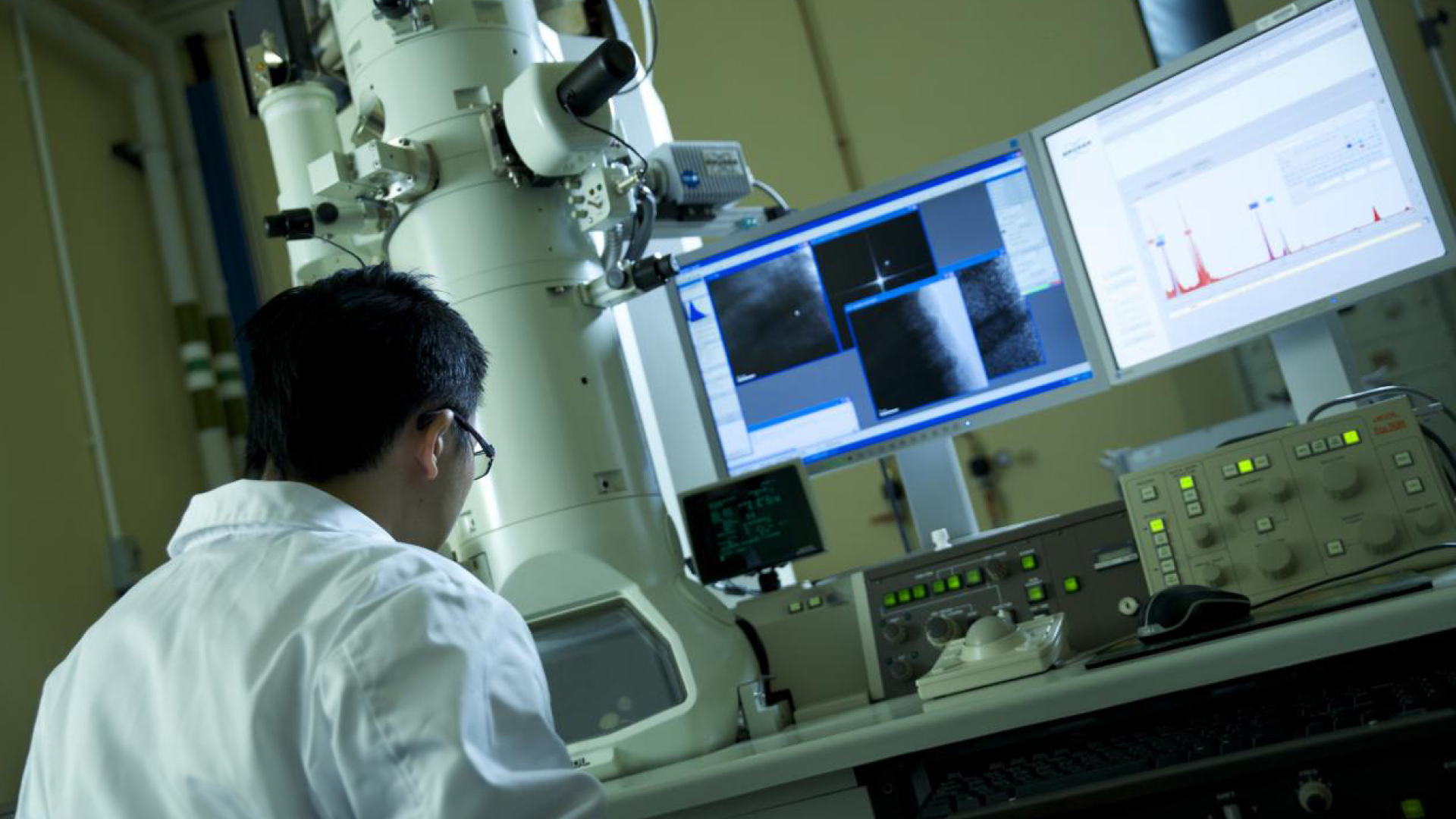News & Stories
2015
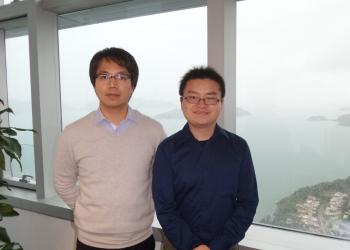
News
HKUST Theoretical Physicists Solve the Puzzle of Ising Superconductivity
A research team led by Prof Vic Kam Tuen Law, Assistant Professor of the Department of Physics at the Hong Kong University of Science and Technology (HKUST), gave an explanation to the complex phenomenon of superconductivity that survives under strong magnetic field, offering a theoretical answer to an unsolved experimental observation by a group of scientists in the Netherlands. The collective findings were published in Science on 12 November 2015.
Superconductivity is a quantum phenomenon in which electrons form pairs and flow with zero resistance. However, strong enough magnetic field can break electron pairs and destroy superconductivity. When informed by researchers from the Netherlands that superconductivity in thin films of MoS2 could withstand an applied magnetic field as strong as 37 Tesla, Prof Law and his student Mr Noah Yuan came up with an explanation and solved the puzzle.
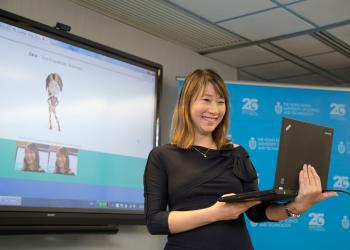
News
Empathetic Robots Built to Detect Human Emotions HKUST Professor on Human-Machine Interactions Elected as ISCA Fellow
What would happen to our lives if robots could read our emotions and act like a friend? It may sound like some plots in science fiction movies, but Prof Pascale Fung from the Department of Electronic and Computer Engineering at the Hong Kong University of Science and Technology (HKUST) has realized this dream. An expert in intelligent systems that understand and empathize with humans, Prof Fung’s latest project “Zara the Supergirl” is a prototype machine capable of chatting with humans in both English and Mandarin, it is expected to chat in more languages including French in the future.
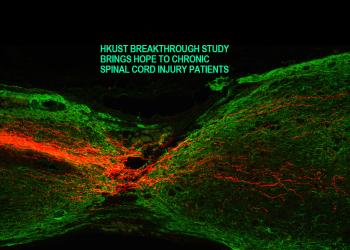
News
HKUST Breakthrough Study Brings Hope to Chronic Spinal Cord Injury Patients
HKUST researchers recently found a way to stimulate the growth of axons, which may mark a new beginning on chronic spinal cord injury (SCI) treatments.
SCI is a formidable hurdle that prevents a large number of injured axons from crossing the lesion, particularly the corticospinal tract (CST). Patients inflicted with SCI often suffer a loss of mobility, paralysis, and interferes with activities of daily life dramatically.
Led by Professor Kai Liu, Assistant Professor from Department of Life Sciences at HKUST, the HKUST research team initiated PTEN deletion on mice after pyramidotomy. Similar treatment procedures were carried out 4 months and 12 months after severe spinal cord injuries.
The team recorded a regenerative response of CST axons in all three samples – showing that PTEN deletion stimulates CST sprouting and regeneration, even though the injury was sustained a long time ago.
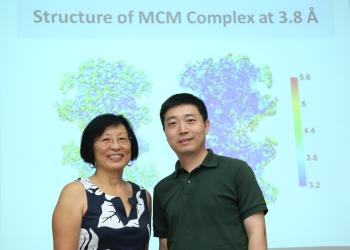
News
HKUST-Tsinghua University Scientists Solve the Structure of the MCM2-7 Complex that Destabilizes Duplex DNA for Unwinding
A team of scientists from the Division of Life Science and HKUST Jockey Club Institute for Advanced Study at the Hong Kong University of Science & Technology, and School of Life Sciences at Tsinghua University are the first to solve the near atomic structure of the MCM2-7 Complex, which plays a key role in destabilizing and unwinding duplex DNA during DNA replication.
The work is published in an article in the journal Nature on July 29, 2015 (http://dx.doi.org/10.1038/nature14685) and highlighted in a commentary in News and Views in the same issue (http://www.nature.com/nature).
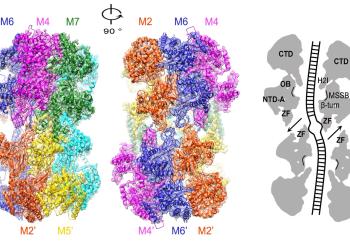
News
HKUST-Tsinghua University Scientists Solve the Structure of the MCM2-7 Complex that Destabilizes Duplex DNA for Unwinding
A team of scientists from the Division of Life Science and Jockey Club Institute of Advanced Study at the Hong Kong University of Science & Technology, and School of Life Sciences at Tsinghua University are the first to solve the near atomic structure of the MCM2-7 Complex which plays a key role in destabilizing and unwinding duplex DNA during DNA replication. This work is published in an article in the journal Nature on July 29, 2015
(http://www.nature.com/nature/journal/vaop/ncurrent/full/nature14685.html)
and highlighted in a commentary in News and Views in the same issue of Nature
(http://www.nature.com/nature/journal/vaop/ncurrent/full/nature14643.html).
Fundamental problem in replicating DNA
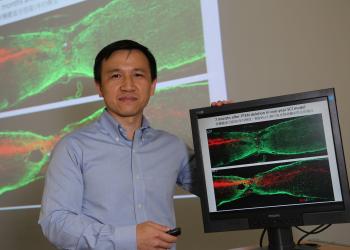
News
HKUST Breakthrough Study Brings Hope to Chronic Spinal Cord Injury Patients
A research team led by Prof Kai Liu, Assistant Professor from the Division of Life Science at the Hong Kong University of Science and Technology (HKUST), has successfully found a way to stimulate the growth of corticospinal tract (CST) axons, nerve fibres that control voluntary motor functions, spell the dawn of a new beginning on chronic spinal cord injury (SCI) treatments. The groundbreaking discoveries have been published in The Journal of Neuroscience.
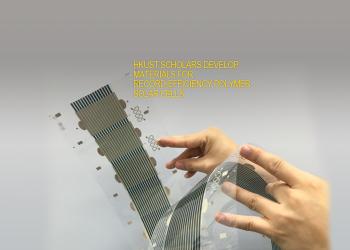
News
HKUST Scholars Develop Materials for Record-efficiency Polymer Solar Cells
Smartphones are getting more powerful every year and many people are treating their phones as a replacement of their computers. Extensive usage brings a severe drain to the phone’s battery life, making it almost mandatory to keep a mobile charger ready at all times. Keeping the mobile charger fully charged, however, can be a cumbersome practice, as one requires another set of cables and a power outlet to do so.
In the future, one may be able to charge its phone anywhere with daylight. HKUST’s Chemistry Professor Henry He Yan and his research team recently discovered a material design motif for polymer solar cells that produces electricity with record efficiencies; this new discovery can greatly accelerate the commercialization of portable chargers powered by solar energy.

News
HKUST Develops First Visual Analytic System on E-learning Behavior VisMOOC Won HKICT Innovation Award
The Hong Kong University of Science and Technology (HKUST) has developed the first visual analytic system for Massive Open Online Courses (MOOC), which provides interactive, in-depth, and user-friendly analysis of e-learning behavior, promising improvement in teaching quality and more demand-focus MOOC programs that could further boost the development of online education.The system Visual Analysis of MOOC (VisMOOC), developed by a team led by Prof Huamin Qu from the Department of Computer Science and Engineering, has received the Best Innovation (Innovative Technology) Silver Award at The Hong Kong ICT Awards this year.





